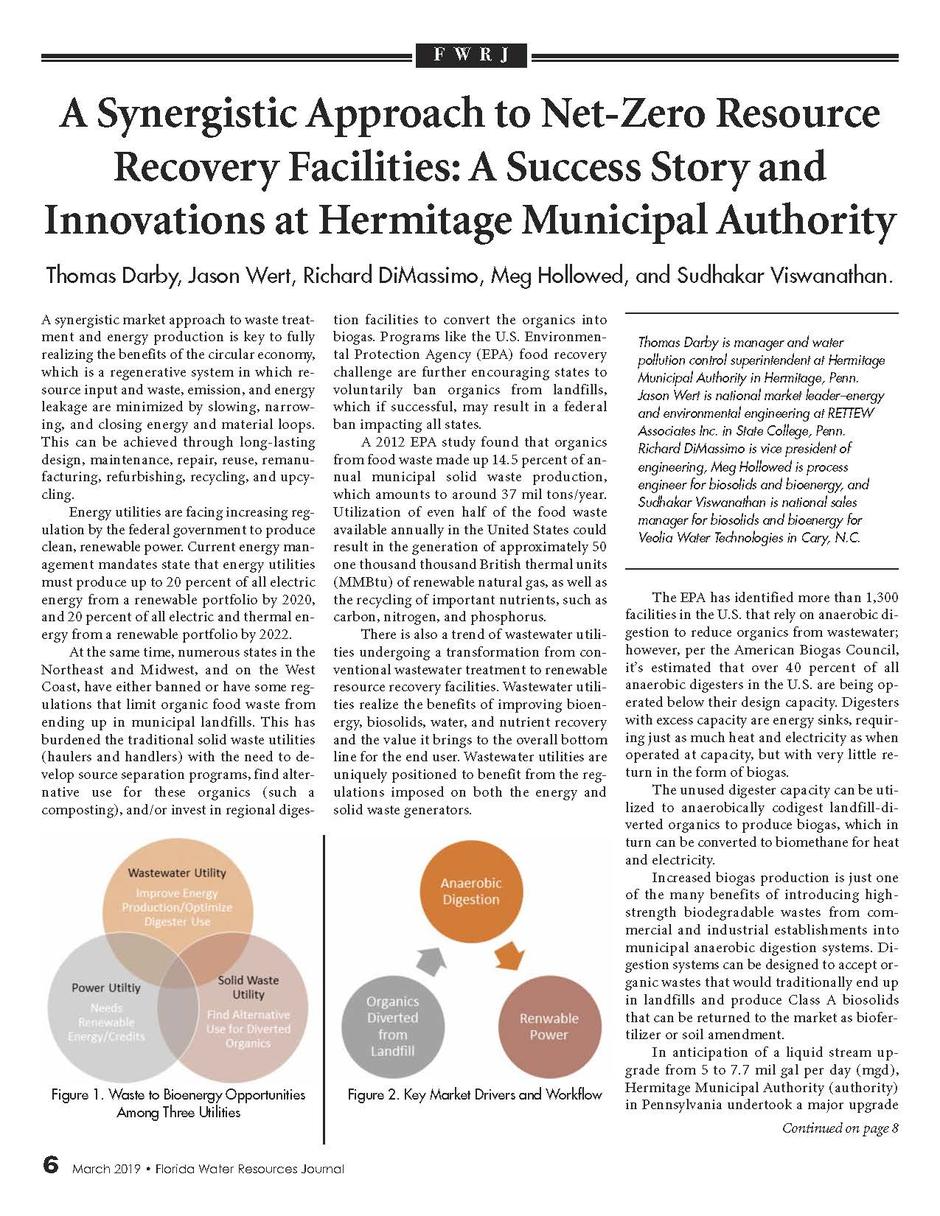A Synergistic Approach to Net-Zero Resource Recovery Facilities
Increased biogas production is just one of the many benefits of introducing highstrength biodegradable wastes from commercial and industrial establishments into municipal anaerobic digestion systems. Digestion systems can be designed to accept organic wastes that would traditionally end up in landfills and produce Class A biosolids that can be returned to the market as biofertilizer or soil amendment.
In anticipation of a liquid stream upgrade from 5 to 7.7 mil gal per day (mgd), Hermitage Municipal Authority (authority) in Pennsylvania undertook a major upgrade of its solids handling facility. The facility has only secondary treatment, meaning there was no easy-to-digest, high-calorific-value primary sludge as a feed to the new anaerobic digesters. Goals of the solids handling facility upgrade were to increase treatment capacity and to boost biogas generation for use as the primary fuel in a combined heat and power (CHP) cogeneration system to offset process heat and generate renewable electricity. This led to a solids management plan specifically designed to address high-strength codigestion of organic wastes imported to the facility and subsequent production of EPA-approved Class A biosolids for biofertilizer and generation of renewable energy.



